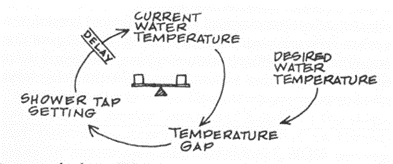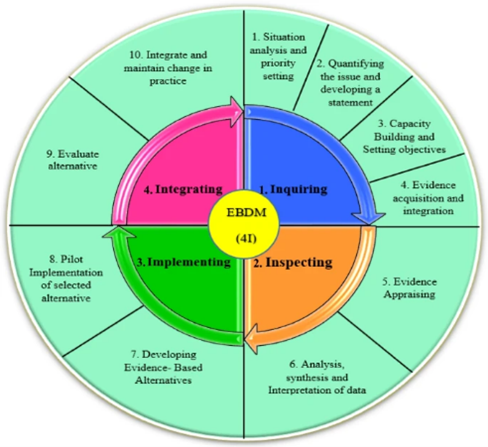A Self-study about the Impact of AI on Project Stakeholder Management
I want to know the exact details of how AI can help project managers.
Not much concrete work is done in this area, so it is hard to find scientific papers or case studies about the impact of AI on project management.
In this situation, I had to rely on the most powerful and trustworthy method, i.e., Self-help.
To understand the influence of AI, I picked one specific knowledge area: Project stakeholder management.
I will try to find out the benefit of using an AI tool or system on the four processes that comes under this knowledge area.
These days, I am reading loads of articles related to “AI in Project Management”. Being a PM, I always look for such articles with great curiosity and expectations. I want to understand how AI will impact project management.
To my dismay and frustration, most of such articles turn out to be fluff. I can categorize most of these articles into the following three brackets:
- Some start with an explanation of AI and then get into details about different forms of AI like NLP (Natural Language Processing), ML (Machine Learning), Generative AI, etc.
- A few articles mention various tools that use AI. Unfortunately, these tools had no relevance whatsoever to project management.
- Many articles talk about the benefits of using AI in project management, such as automation, cost reductions, time savings, and better decision-making. In my opinion, all these benefits look like a general statement that goes for every other innovation too.
First, a refresher on what is project stakeholder management:
Stakeholder management is the process of managing the expectations of anyone who has an interest in a project or will be affected by it.
The four process groups identified in project Stakeholder management are as follows:
- Identify Stakeholders
- Plan Stakeholder Management
- Manage Stakeholder Engagement
- Control Stakeholder Engagement
I will examine these processes and try to inject AI into their ITTO (Inputs, Tools, Techniques & Outputs) to the best of my knowledge.
I am not an expert in AI, so please correct me wherever you think there could be better usage of AI in that specific process.
Identify Stakeholders: Identify everyone, be it groups or individuals, affected positively or adversely by the project’s outcomes.
In this process, we check the existing project documents to identify all the stakeholders. These documents can be project charter, project proposal, or any contract created at the project beginning.
I do not think AI will be of any use in this process. Generally, a Project manager checks all these documents and lists all the stakeholders. PMs should also connect with project sponsors and other subject matter experts for their input in the stakeholders list.
Every project is unique in nature with its own enterprise environmental factors (EEF). In such a case, it is not possible to develop a ML model that provides predictions for unique projects.
Stakeholder analysis is one of the techniques used in this process. The primary goal of stakeholder analysis is to gather information about these stakeholders and use it to make informed decisions, manage relationships, and mitigate potential conflicts.
Can we use AI here? Can we Develop an ML model to categorize the stakeholders according to their power and influence automatically?
A few questions to ask: Is it worth the effort? What could be the maximum number of stakeholders in a project? Let us assume that the project is big and complex, so we have many stakeholders identified. Can we create a machine learning model by mapping different attributes like stakeholder’s interests, concerns, and influence and then classify them based on their level of interest and power or influence? The input data would vary a lot for each project. In such cases, the models would need a large amount of data for training to identify patterns for predictions.
Let’s assume we can create an ML model that can define stakeholders’ engagement strategy depending on their power/influence/interest. Will this model add much value to the organization’s productivity?
I feel a project manager could do the stakeholder analysis more quickly and accurately.
The output of this process is a stakeholder register.
Advertisement
[widget id=”custom_html-68″]
Plan Stakeholder Management: comes up with the management strategies required to engage stakeholders effectively.
This process also requires the PM to check project-related documents.
Mind mapping is one of the techniques used in this process. It is a visual tool.
Can AI be useful in this technique? We could automatically create a Mind map using the stakeholder register constructed in the previous process. PMs can then develop an engagement strategy or prioritize the engagement efforts based on the mind maps. This automated process saves time and effort for the Project managers.
Is this a good AI use case? No, according to me. The mind mapping tools might already have the feature to import a risk register as an Excel or doc file. So, I don’t think it is justified usage of ML for developing mind maps from Stakeholder risk register.
The output of this process is the Stakeholder Engagement Plan.
Manage Stakeholder Engagement: This process outputs effective communication with stakeholders and works with them to meet their needs through meaningful and appropriate involvement in project activities.
This is primarily an execution phase where documents are updated on a need basis. An ML model cannot predict this day-to-day process. So, an AI chatbot cannot replace a project manager here. A PM needs to have active interactions with stakeholders. PM needs to listen to what the stakeholder is saying and try to infer what the stakeholder is not saying.
The tools & Techniques in this process talk about interpersonal and communication skills, which are tough to emulate via an AI chatbot. I feel if a stakeholder gets to know that a bot is doing communication instead of a human PM, they might view it as a communication breach. I cannot imagine a stakeholders’ meeting where an AI bot is giving a status update report, and all the stakeholders are nodding their heads, feeling proud and in awe about this technology feat.
Control Stakeholder Engagement: This is the process of monitoring overall project stakeholder relationships and adjusting the strategies and plans for engaging stakeholders accordingly.
One of the techniques in this process is decision-making – Multicriteria decision analysis (MCDA)
MCDA is a structured approach for evaluating and comparing multiple criteria or factors when making decisions. It also requires data collection, assessment, monitoring, and readjustments.
We can use some software for decision-making that uses custom-trained ML models. I feel the attributes to train the models would be humongous and human centric. It would not be useful to create custom models for stakeholder engagement.
I have covered all four processes involved in the Project Stakeholder Engagement knowledge area.
In this exercise, I tried to put an unbiased perspective where I wanted to incorporate AI consciously in the Project Stakeholder Management knowledge area.
My concluding thoughts on how AI would impact Project Management:
The Project management stream requires more behavioral skills than technical skills. It requires human eyes, ears, brain, and heart. It cannot be completely replaced by Artificial Intelligence generated robots or systems.
As mentioned earlier, I am a project manager, not an AI expert. I would look forward to constructive input from other AI experts. But for the AI bots generated comments, please stay away!






